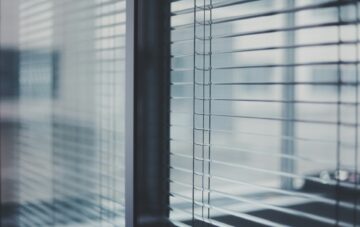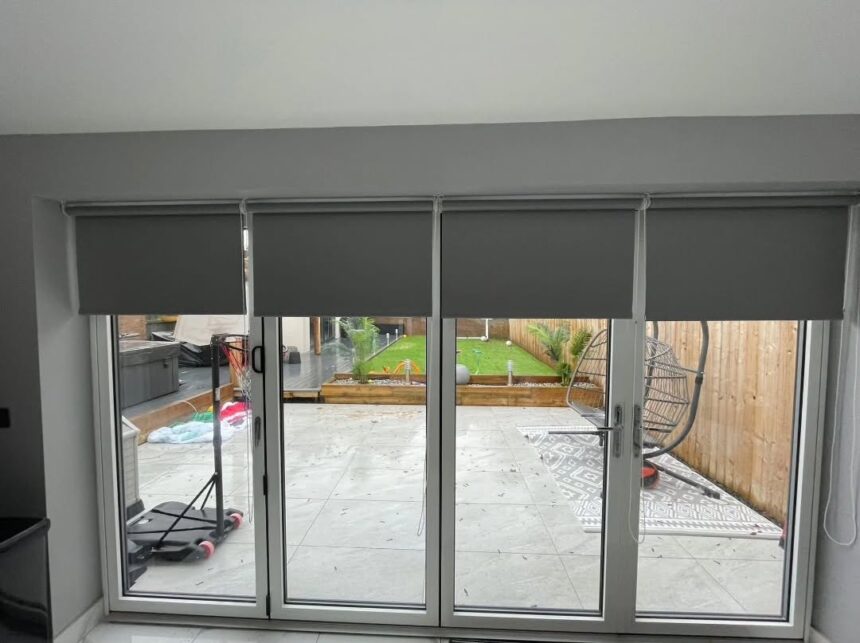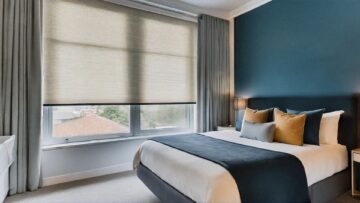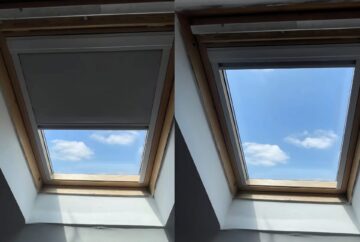
How Office Blinds Can Save Energy
How Office Blinds Can Save Energy As the colder months close in, maintaining a warm and comfortable office space for your staff whilst simultaneously keeping a handle on your company’s…

Homeowners in Liverpool, and the rest of the UK, have faced significant surges in energy bills in recent years, with a notable rise in April this year. We’re currently living through the worst cost of living crisis in a generation and with energy costs continuing to rise, more homeowners are looking for practical ways to reduce their heating bills, without forking out on expensive upgrades or complicated installations. In this climate, passive insulation strategies have never been more important. But many homeowners are now asking “do blackout blinds keep heat in,” and whether they could be a low-cost answer to climbing energy bills.
Blackout blinds, long appreciated for their ability to block out light and create a restful environment, are increasingly being recognised for another valuable benefit; their potential to help retain heat. Acting as a barrier between your windows and your interior space, these blinds offer more than just darkness, they could also contribute to a warmer, more energy-efficient home.
Windows are typically one of the weakest points in the home in terms of insulation; studies estimate that in the average UK home, about 25% to 30% of heat loss occurs through windows and doors. But the right window covering can help to combat this. Blackout blinds’ insulation is effective; they’re made with particular materials and designed with specific features that help to trap warm air and provide better insulation. They are typically made from multi-layered, tightly woven materials designed to block light and reduce heat transfer.
Blackout blinds are arguably the most energy efficient blind type as they offer year-round benefits by improving both thermal insulation in winter and light control in summer, making them a particularly smart investment.
In winter, they act as heat retention blinds, reducing heat loss by blocking the space around your window, trapping heat inside and eliminating draughts. They prevent the heat from being transferred through the glass, keeping indoor temperatures stable and reducing reliance on central heating.
In summer, blackout blinds block 99% of sunlight, preventing rooms from overheating. This natural cooling system prevents overuse of electric fans or air conditioning units which are known for hiking up the price of your energy bill.
So, how much money can you actually save on your energy bill through blackout blind installation? Stats can obviously vary depending on the age of your windows and doors, but a recent study conducted by the University of Salford found that correctly installed blinds can reduce heat loss by up to 33%. This would equate to a significant, helpful saving, month on month.
To get the most out of your blackout blinds, there are a few things you can do to obtain maximum efficiency.
Firstly, consider opting for an ‘inside mount’; not only does this offer a neater, more streamlined look, it means that your blind is more snugly fit against the window. This is important because even the smallest of gaps can let in cold air as well as unwanted light, reducing your blind’s overall effectiveness.
You should ensure that your measurements are accurate before submitting to your supplier. Full coverage is the aim; if your blind ends up too small, it won’t do its job properly – it’s as simple as that.
Additionally, colour and coating choices can impact how effective blackout blinds are at controlling heat and light, especially in terms of energy efficiency. Darker colours like black, navy and charcoal absorb more heat and create a cosier, warmer feel in winter. These colours also do a better job at eliminating light reflections, making them a good choice for bedrooms and home offices.
In terms of exterior coating (the part that faces the window), white coloured coatings are effective in reflecting solar heat in summer; this keeps the room cooler by bouncing the light away before it enters the room.
If you’d like more advice on measuring or colour recommendations, our experts are always on hand to guide you. You can also check out our full blackout blind range.
When compared against other types of window coverings, blackout blinds offer an ideal balance between performance, cost and appearance. For example, thermal curtains can offer superior heat retention due to their heavy fabric and lining, but blackout blinds are more compact and suitable for modern interiors. Traditional Venetian or roller blinds are less effective overall, as their materials and structure allow significant airflow and light penetration. Roman blinds can perform well if lined properly, though they typically don’t block light completely.
If you’re not already sold on the energy efficient properties of blackout blinds alone, read more about how they’re a solid all round choice, particularly for bedrooms.
Overall, blackout blinds stand out as a highly practical, energy-saving option, especially for those seeking full darkness, year-round comfort, and a sleek finish without a hefty price tag.

How Office Blinds Can Save Energy As the colder months close in, maintaining a warm and comfortable office space for your staff whilst simultaneously keeping a handle on your company’s…

With so many types of roller blinds available, it can feel like a bit of a minefield trying to decide which one is best for your home. Roller blinds are…

Liverpool is a city that never truly sleeps. From the dedicated healthcare workers caring for those in need throughout the night to those working into the early hours in the…